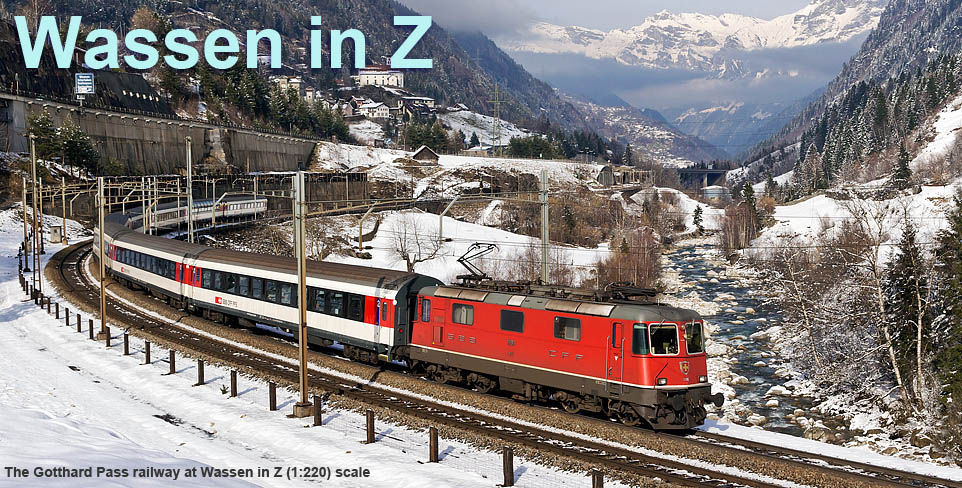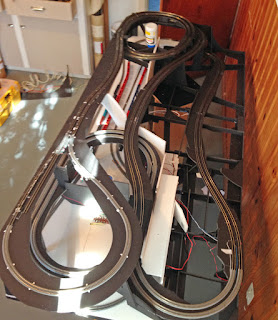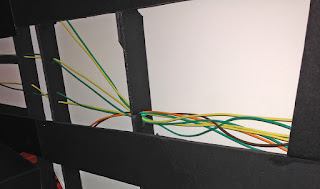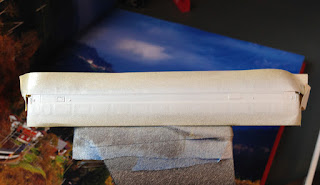As someone who has been using DCC since 1995, it seems strange to be 'stepping back in time' to a DC powered layout.
As Wassen is a whimsical distraction that I've already spent more than enough money on, adding a bunch of Z decoders and fluffing about with all of that isn't likely to happen at this stage, if at all. Especially as this seems to be a pretty simple layout with just an 'Up' track and a 'Down' track and some storage sidings.
However to make that work involves electrically isolating the track into sections and powering only the ones that you want to actually run trains on at a particular point in time.
By my count (and I did run out of fingers at one stage), there will be 9 or 10 sections on the layout: two mainline tracks, 5 sidings or isolatable sections in the yard at the bottom, and two or three up top.
As you "saw" earlier (if you'll pardon the pun), I used a Dremel cut off wheel to cut gaps in the rails. (If I'd had some plastic insulating rail joiners I might have used those, but they don't always hold the track in perfect alignment.)
Until now, I have soldered the minimum number of wires onto tracks and hung them all together in a temporary fashion to be able to run a train around for testing purposes. Obviously that's only a partial short-term solution that had to be tackled at some stage.
Today I decided to make this all a bit more kosher, wiring up all (ok, 'all but one') of the sidings:
...feeding all the wires properly through the baseboard (easy in foamboard!),
...and attaching them all to a tagboard so its a bit easier to understand and debug as required:
I've put the tagboard into a spot to the right-rear of the layout that is reasonably accessible, labeled it with a marker that you probably can't see here, and used different coloured wires where possible to make troubleshooting and adjustments easier.






























